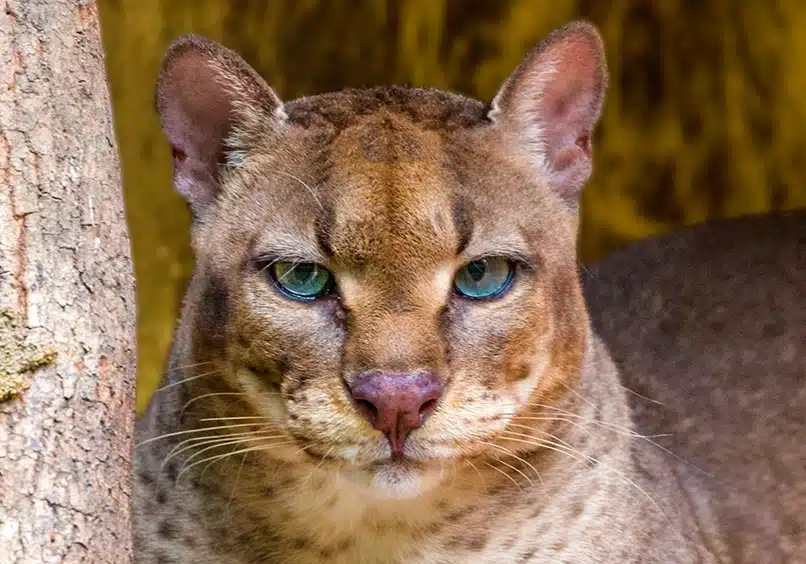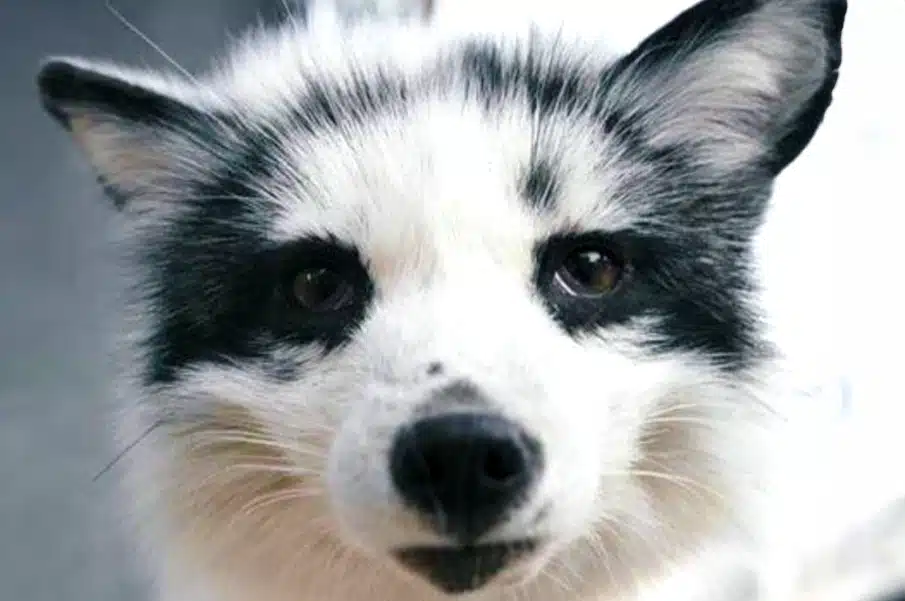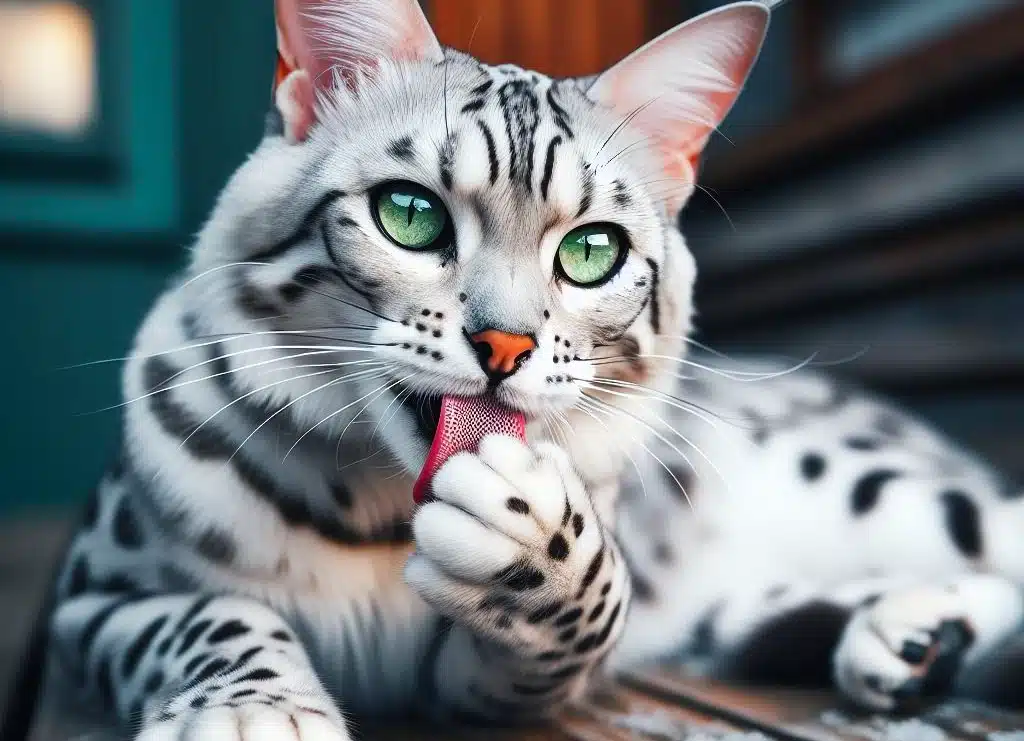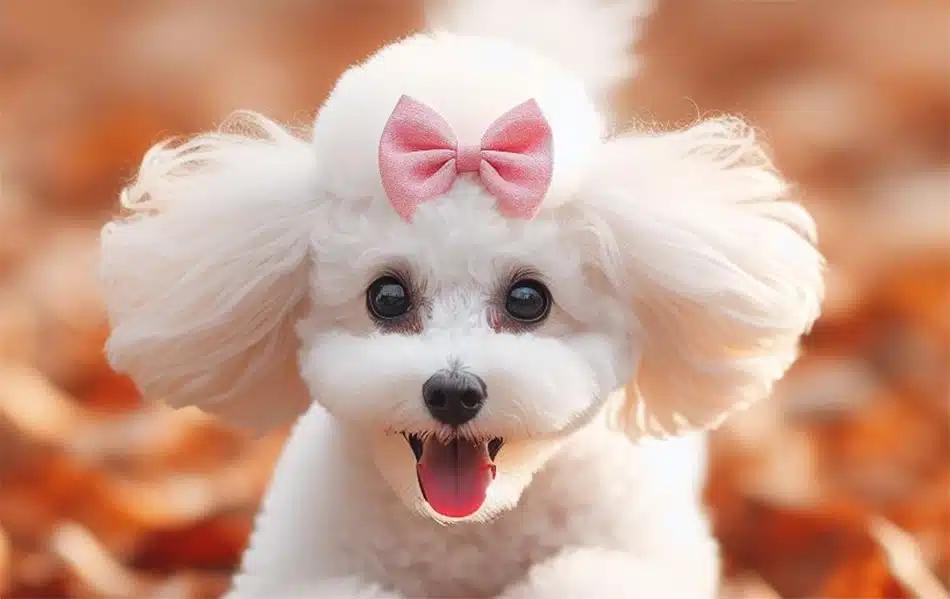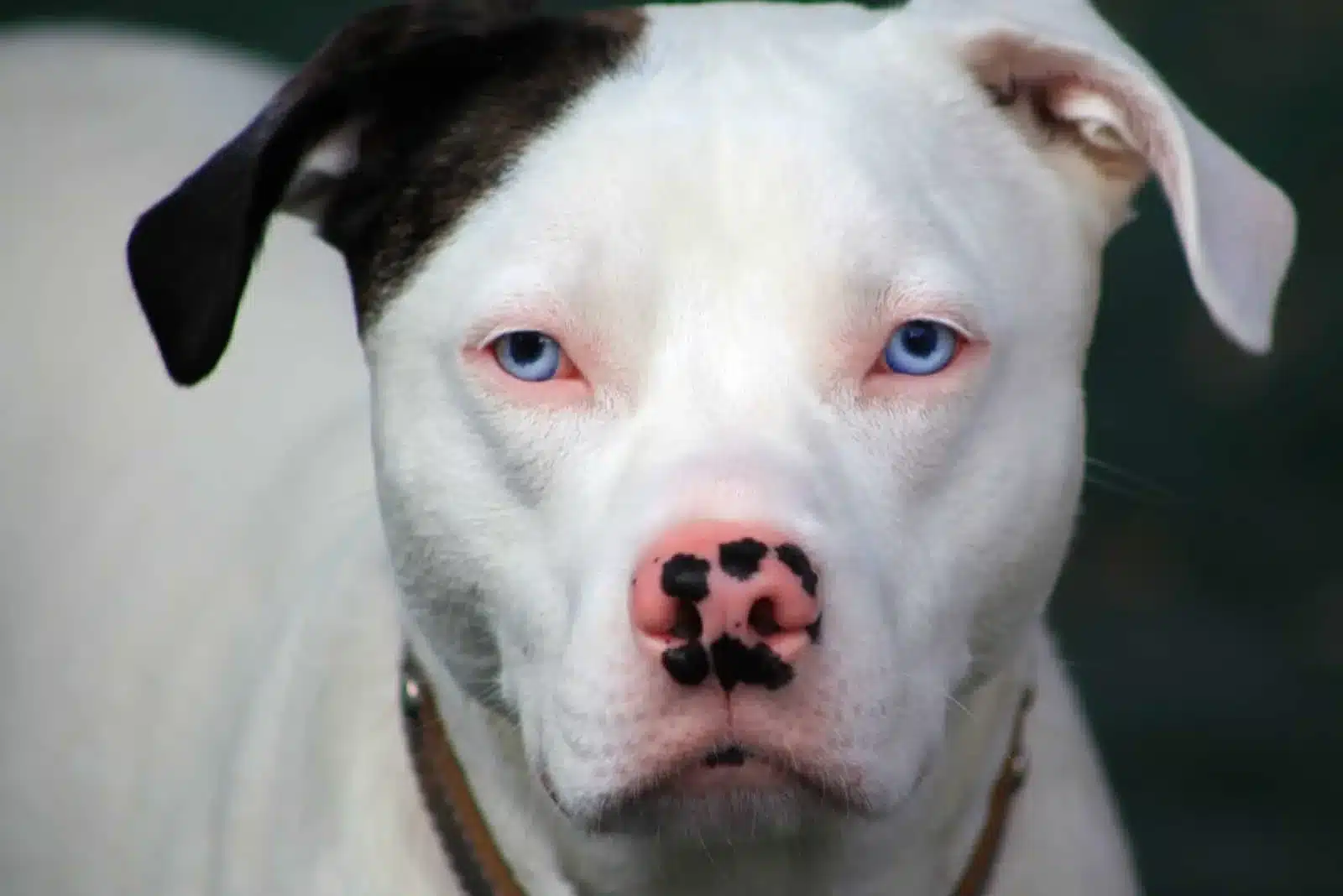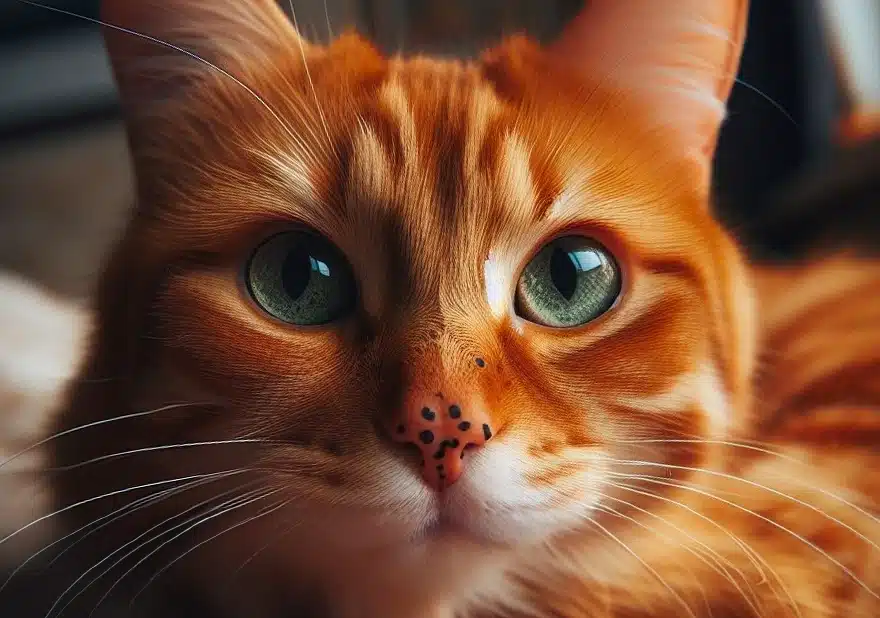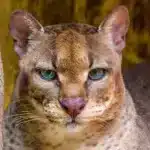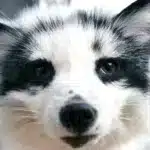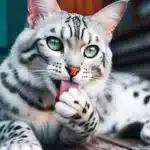Unusual Animal Color Variations And Mutations: The Complete Guide With Photos
Ads Disclosure ?
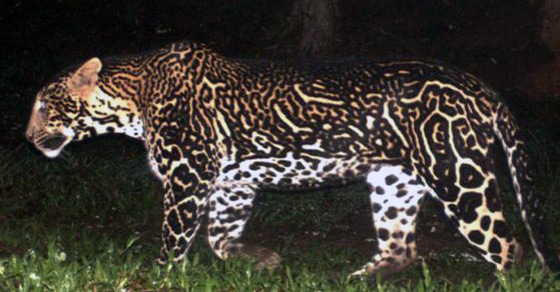
Even after thousands of years of human discovery, new animal species are discovered, identified, and added to the list of known species every single year. Sometimes, however, even animals we thought we knew – even those that are most familiar to us – can look completely foreign.
That can happen when genetic mutations, medical conditions, environmental and other factors cause animals to appear very different than what we expect, sometimes so much so that they may look like an entirely new species.
Some of these unexpected anomalies in animal appearance are more well-known than others, which are quite rare. Many people know that albinism and melanism result in animals that are all-white or all-black, but mother nature has many more tricks up her sleeve.
Ever heard of piebald, erythristic, or leucistic animals? How about chimeras? And these are just the beginning…
Jump To Section
- Genetic Color Mutations Explained
- Non-Genetic Factors Causing Color Variations
- Albino Animals
- Leucistic Animals
- Amelanistic Animals
- Piebald Animals
- Melanistic Animals
- Erythristic Animals
- Anerythristic Animals
- Xanthochromistic Animals
- Axanthic Animals
- Heterochromia in Animals
- Other Unusual Color Mutations in Animals
- Chimeric Animals
- Vitiligo in Animals
- Environmental or Temporary Animal Color Changes
- Animal Fur and Feather Variations
- Hybrid Animals That Look Very Different From Their Parent Species
- Extinct Animal Sub-Species Color Variations
- Animal Color Variations That Unfortunately Do Not Exist
Genetic Color Mutations Explained
Melanin and Pigment Cells
In animals, color variations are often a result of differences in melanin production and distribution within pigment cells called melanocytes. Melanin is a natural pigment responsible for producing the colors we observe in skin, hair, and eye colors. There are two main types of melanin: eumelanin, which produces black and brown colors, and pheomelanin, which produces yellow and red colors.
Pigment cells are located in the skin and hair follicles, and their role is to synthesize and distribute melanin. The process of melanin synthesis happens inside melanosomes, which are specialized organelles within the melanocytes.
Gene Expression and Regulation
The production and distribution of melanin are regulated by various genes, including MC1R and TYRP1, which control the type, quantity, and distribution of both eumelanin and pheomelanin. Mutations in these genes contribute to color variations, as they influence the type and amount of melanin produced.
For example, a variation in the MC1R gene can lead to a higher production of pheomelanin, resulting in reddish hair or fur color. Likewise, a mutation in the TYRP1 gene can affect eumelanin production, leading to changes in the black and brown colors observed in animals.
Gene expression can also be influenced by environmental factors and genetic variations among populations, allowing for a wide array of colors and patterns to develop. Mutations can also be accelerated by exposure to radiation, with studies in the aftermath of the Chernobyl disaster showing that animals still living in the surrounding area seeing a significant increase in mutations, including variations in coat color, among other abnormalities.
Major Color Mutations in Animals
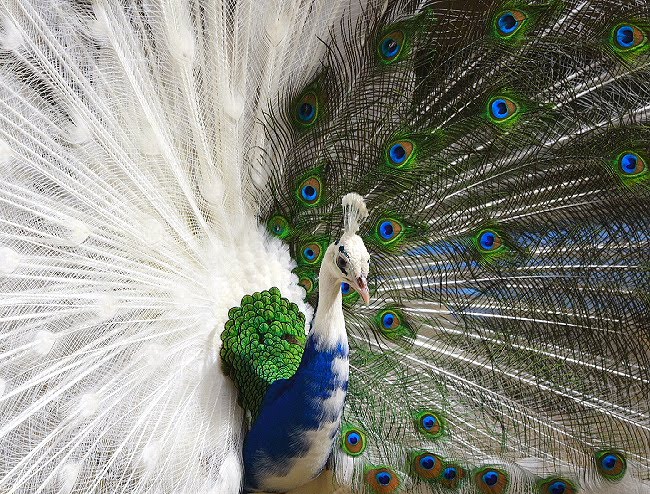
Some of the more well-known color mutations that occur in animals are:
- Albinism
- Leucism
- Amelanism
- Piebaldism
- Melanism
- Erythristism
- Anerythristism
- Xanthochromism
- Axanthism
- Chimerism
We explore these and many others, some extremely rare, below.
Non-Genetic Factors Causing Color Variations
Apart from genetic mutations, there are non-genetic factors that can cause color variations in animals. These factors include medical conditions, environmental conditions, and food-related color variations that may affect an animal’s appearance.
Medical conditions such as vitiligo, a disorder that causes animals to develop depigmented patches on their skin and fur, can result in an animal displaying unusual coloration. Similarly, hormonal imbalances might cause fur discoloration in mammals. Some parasites or infections can also lead to pigment changes in an animal’s skin or fur.
Environmental conditions also play a role in influencing animal coloration. Factors like temperature, humidity, and exposure to sunlight can impact the production and distribution of pigments in animals. For example, melanocortin pathway plays a crucial role in determining color variation in response to the environment. Mammals living in warmer climates might develop a lighter coat, while those in colder regions may have darker fur to absorb more heat.
Food-related color variations are seen in some animals due to substances found in their diets. Carotenoids, pigments found in plants, are responsible for the vibrant coloration seen in certain bird species. A classic example is the flamingo, which gets its distinctive pink hue from consuming shrimp and other crustaceans rich in carotenoids. Another example is Canthaxanthin, responsible for the bright orange coloration seen in salmon.
Occasionally, substances that an animal ingests or is exposed to in its environment can lead to very unexpected color abnormalities, weather temporary or permanent, as we’ll see below in the case of the purple polar bear.
Albino Animals
Albinism is a condition that results from a mutation in the genes responsible for melanin production, causing a complete absence of this natural pigment that’s responsible for producing colors. Animals with albinism exhibit white or very light skin, fur, or feathers, and often have pink eyes.
Albinism can affect many wild animal species, including mammals, birds, reptiles, amphibians, and fish. It also occurs in pets like dogs and cats.
Learn more about albinism in animals here (including many examples, with photos).
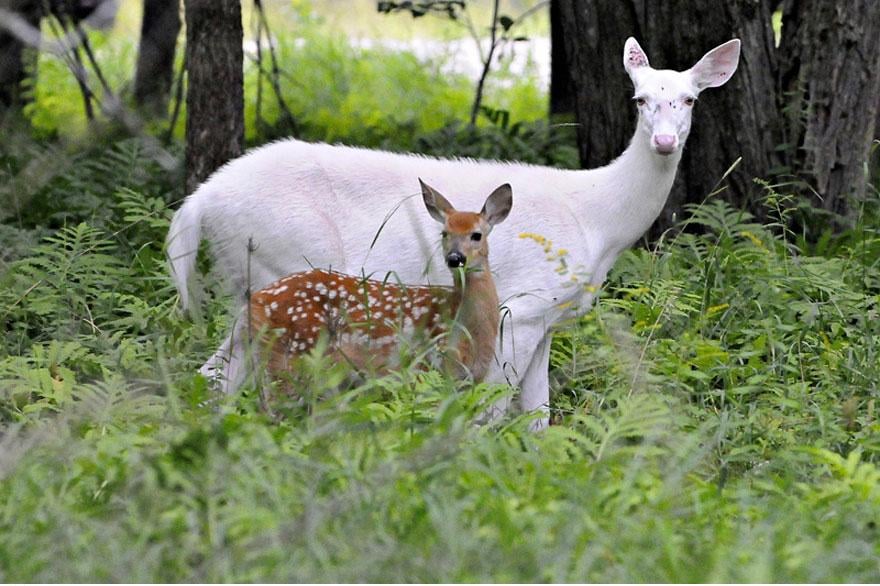
Leucistic Animals
Leucism is a genetic condition that results in the partial loss of pigmentation in an animal’s skin, hair, feathers, or scales, resulting in white or pale coloration. Unlike albinism, in which the animal completely lacks melanin, leucism is characterized by a reduction in melanin and other pigments. Leucism also does not affect the animal’s eyes (which completely lack pigment in albino animals).
Leucistic animals can be found in various species, including mammals, birds, reptiles, amphibians, and even fish.
Learn more about leucism in animals here (including many examples, with photos).

Amelanistic Animals
Amelanistic animals are characterized by the lack of melanin pigments in their skin, hair, or feathers. This pigmentation abnormality can affect a wide range of species, including fish, amphibians, reptiles, birds, and mammals, even humans. Amelanism is often mistakenly confused with albinism and leucism, two other pigmentation disorders that produce somewhat similar visual effects.
Albinism, amelanism, and leucism all result in reduced pigmentation, but they have distinct causes and manifestations:
- Albinism is a genetic condition where an animal lacks melanin completely, resulting in a pale or white appearance with pink or red eyes.
- Amelanism, on the other hand, involves the absence of only certain types of melanin, leading to a reduced pigmentation but not a complete lack of color.
- Leucism is a partial loss of pigmentation that can affect multiple pigment types (not only melanin), causing white or pale skin, hair, or feathers.
A summary comparison of these pigmentation abnormalities:
| Pigmentation Disorder | Cause | Effects | Affected Species |
|---|---|---|---|
| Albinism | Lack of melanin pigment production | Completely white or pale appearance, pink or red eyes | Fish, amphibians, reptiles, birds, mammals |
| Amelanism | Lack of certain types of melanin | Reduced pigmentation but not a complete lack of color | Fish, amphibians, reptiles, birds, mammals |
| Leucism | Partial loss of multiple pigment types | White or pale skin, hair, or feathers | Fish, amphibians, reptiles, birds, mammals |
Piebald Animals
Piebald animals are characterized by irregular patterns of unpigmented (white) spots on a pigmented background of hair, feathers, or scales. These unique markings are the result of a genetic mutation that affects the distribution of pigment in the animal’s body, causing the lack of melanocytes in certain areas.
Some interesting facts about piebald animals:
- Piebald animals are not the same as albino animals. While albino animals lack all pigmentation, piebald animals have both pigmented and unpigmented areas.
- The piebald gene can affect many animals, including horses, cows, deer, and even bears.
- This color pattern is not just limited to mammals and reptiles; birds, reptiles, amphibians, and fish can also be piebald.
This genetic condition is rarely seen in a variety of animals species, including pets like dogs and cats.
Learn more about piebaldism in animals here (including many examples, with photos).
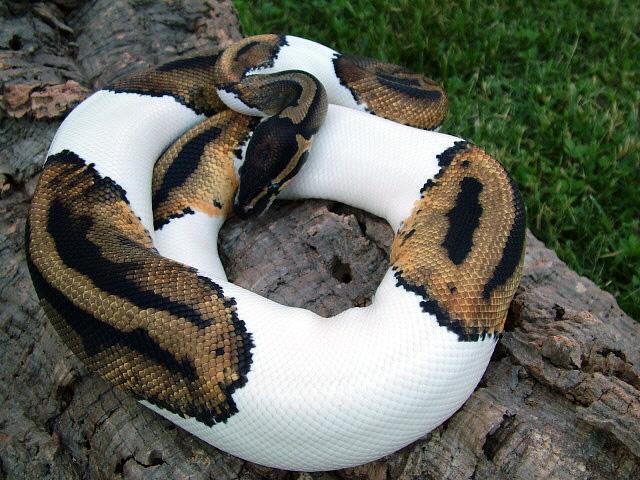
Melanistic Animals
Melanism is a genetic mutation that results in an excess of dark pigmentation in an animal. This occurs in many different types of animals, including mammals, reptiles, and insects. The opposite of albinism, melanism occurs when there is an overproduction of melanin, resulting in black or nearly black fur.
Learn more about melanism in animals here (including many examples, with photos).
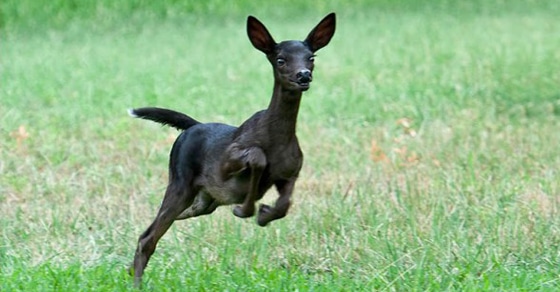
Partial melanism is a condition in which an animal has an increased amount of melanin in only certain parts of its body, rather than in its entire body. This can result in patches, spots, or sections of the animal’s skin, fur, feathers, or scales being darker.

Pseudomelanism, also known as abundism, is a pattern variation in animals characterized by exaggerated markings such as spots or stripes, resulting in an unusual density or distribution of the typical markings. This condition is different from true melanism, in which dark pigmentation affects the animal’s entire body.
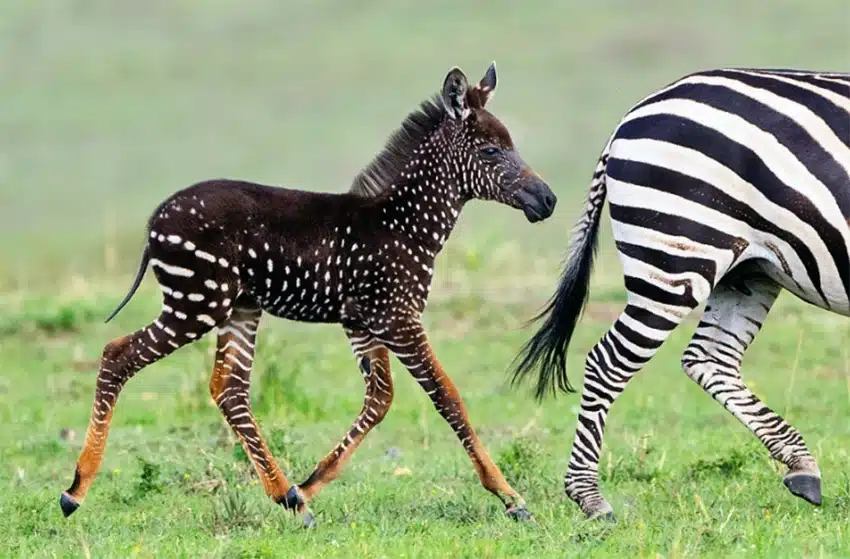
Melanistic Big Cats
Melanism is particularly prevalent in big cat species such as leopards and jaguars, but is inherited differently based on the species. In leopards, melanism is inherited as a recessive trait, whereas in jaguars, it appears to be dominant, giving rise to individuals that are commonly referred to as black panthers (which are not, contrary to popular belief, a separate species).
Beyond these well-known big cats, melanism has been observed in several other wild cat species, including the African serval and the North American bobcat. These dark-coated variants may have a selective advantage in certain habitats, such as dense forests, where the darker fur provides better camouflage. This fascinating adaptation showcases the diversity of survival strategies within the cat family and the role of genetics in the evolution of species.
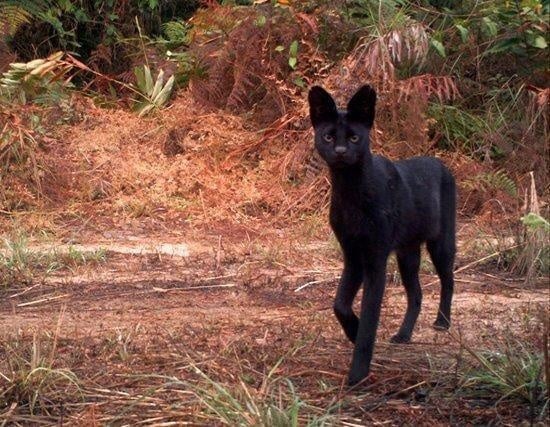
Erythristic Animals
Erythrism is a genetic color mutation found in some animals, characterized by an abundance of red or orange coloration in their hair, fur, or feathers. One notable example is katydids, which are a type of grasshopper that exhibit striking pink coloration caused by erythrism, which makes them easily distinguishable from the common green katydids.
While extremely rare, this condition has been observed across multiple animal species – including raccoons, deer, and even leopards.
Learn more about erythrism in animals here (including many examples, with photos).

Anerythristic Animals
The opposite of erythristism, the anerythristic color mutation is caused by a genetic alteration that prevents an animal from producing red pigments, causing it to display unusual coloration instead.
For example, anerythristic reticulated pythons (seen below) have a greenish-bluish tone due to the absence of red pigments.
It is important to note that:
- This mutation does not render the animal completely colorless – other pigments remain unaffected.
- Anerythrism and axanthism are separate color mutations that cause different pigment deficiencies. While anerythristic animals lack red pigments, axanthic animals are unable to produce yellow pigmentation.
Examples of anerythristic animals include certain reptiles like snakes and lizards.
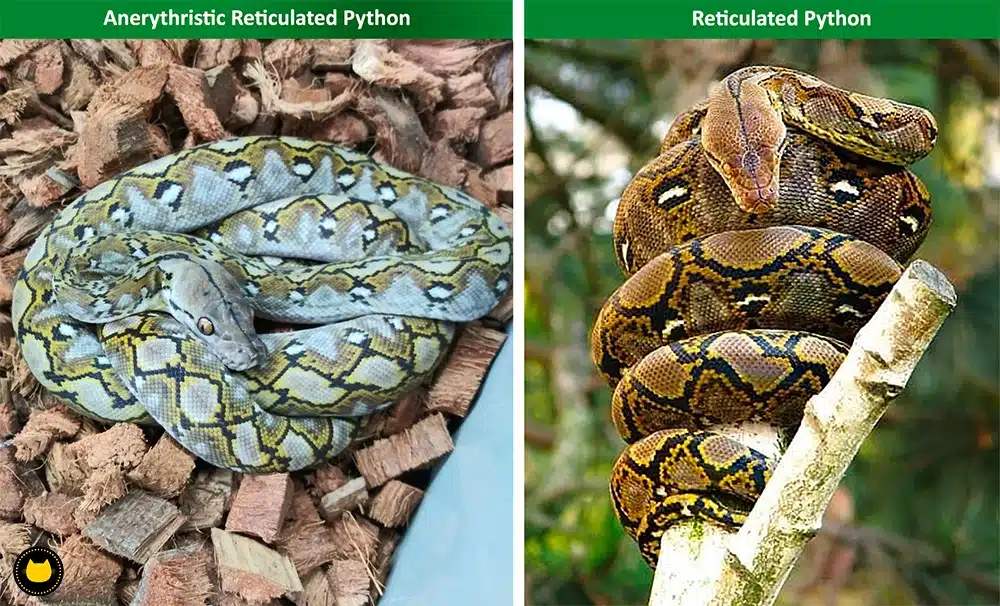
Xanthochromistic Animals
Xanthochromism is a genetic mutation resulting in unusually yellow coloration in an animal. It is caused by the lack of usual red pigmentation and its replacement with yellow pigmentation. Xanthochromism affects a variety of species, including mammals, birds, reptiles, and amphibians.
Parrots that exhibits xanthochromism are often referred to as “Lutino”. Since it is caused by a recessive gene, two non-lutino birds can produce a lutino offspring.

Axanthic Animals
Axanthic animals are those which have a genetic mutation that interferes with their ability to produce yellow pigment. This condition, known as axanthism, affects the amount of xanthophores and carotenoid vesicles, sometimes causing them to be completely absent.
Axanthic animals usually have a change in color pattern with a reduction in yellow coloration. In some cases, this condition can lead to an overall grayish appearance, while in others, the lack of yellow can cause the other colors in their coat, scales or feathers to become more prominent.
The results can be quite striking at times, as in the case of the axanthic “green” frog below.
Axanthic animals can be found in various species, such as reptiles, amphibians, birds, and even mammals.
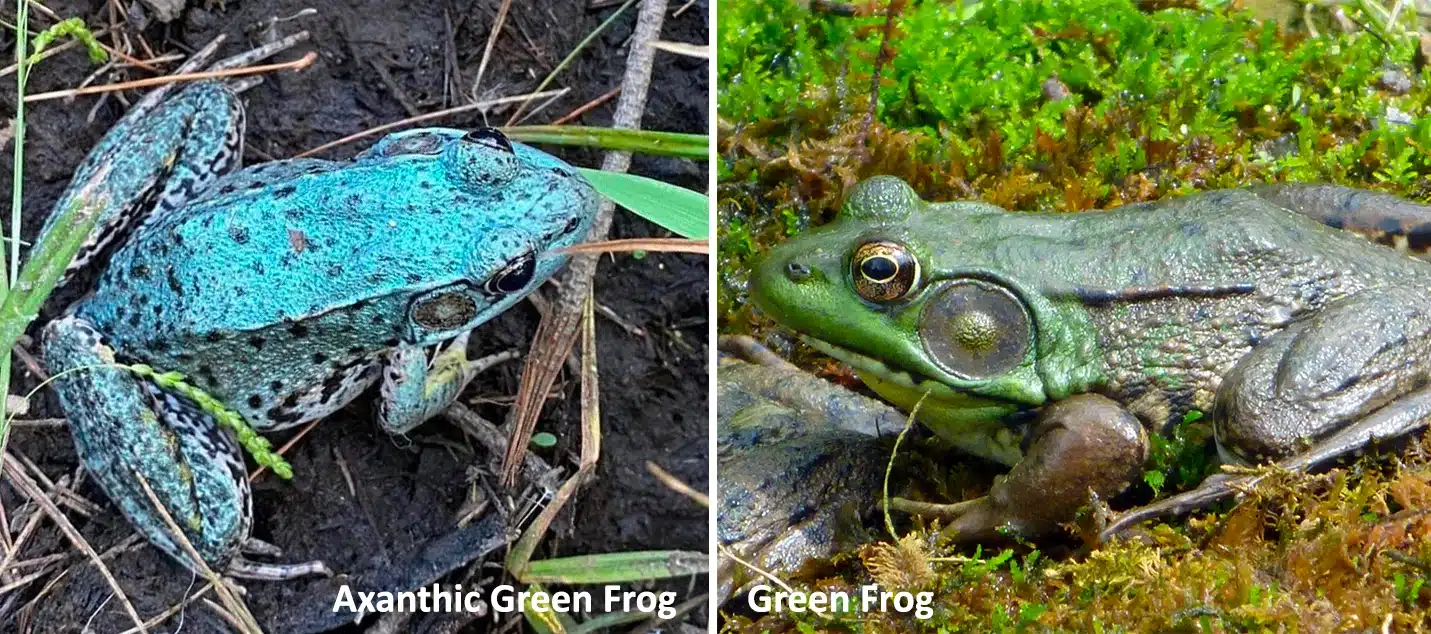
Heterochromia in Animals
Heterochromia is a fascinating color mutation that occurs when an individual has different colored eyes. It can be found in both humans and animals.
In animals, this phenomenon can manifest itself in two forms, complete and sectoral heterochromia:
- Complete heterochromia is when each eye has a distinct color.
- Sectoral heterochromia is when there is a mix of different colors within the iris of a single eye.
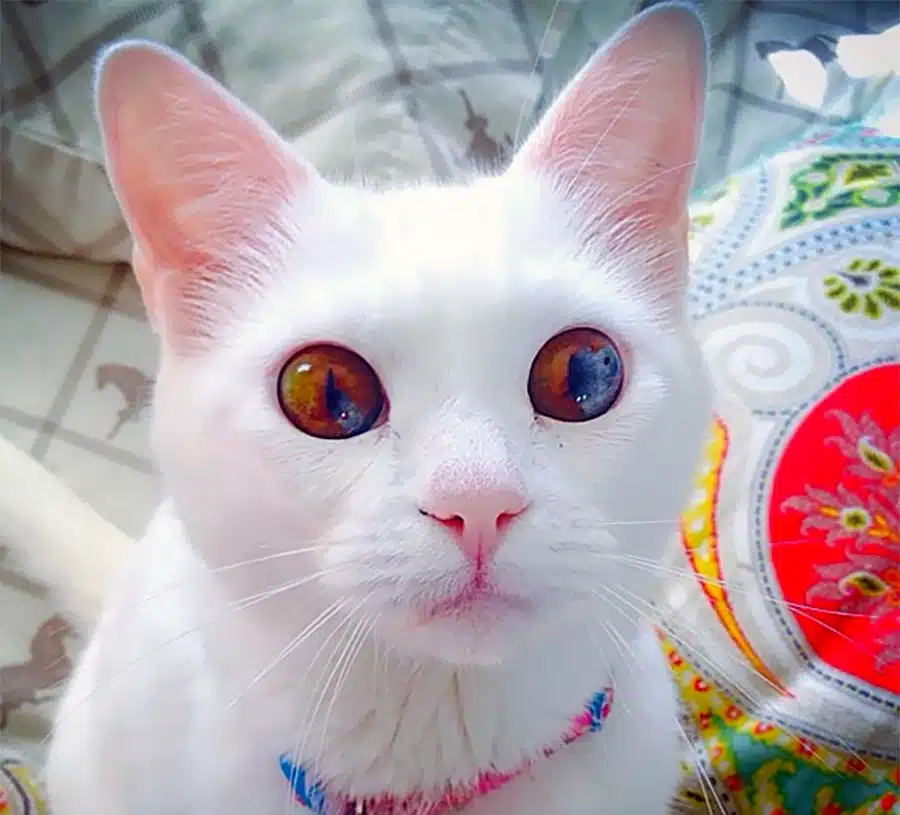
Other Unusual Color Mutations in Animals
In the diverse animal kingdom, color mutations extend far beyond the more commonly recognized conditions like albinism and melanism. Occasionally, unique mutations arise that affect individual animals or those in specific secluded environments, leading to extraordinary and distinctive color variations.
These rare mutations can result in patterns and hues that are not only striking but also entirely unique. For instance, some animals may exhibit unusual spotting or striping, or vibrant or subdued shades not typically seen in their species.
Such anomalies, while not fitting into the conventional categories of color mutations, underscore the intricate way genetics shapes the appearance of animals across the globe.
Blue Lobsters
Scientists estimated that only 1 in 2 million lobsters turns blue as a result of a rare genetic mutation that causes the normally brown crustacean to excessively produce a particular protein.
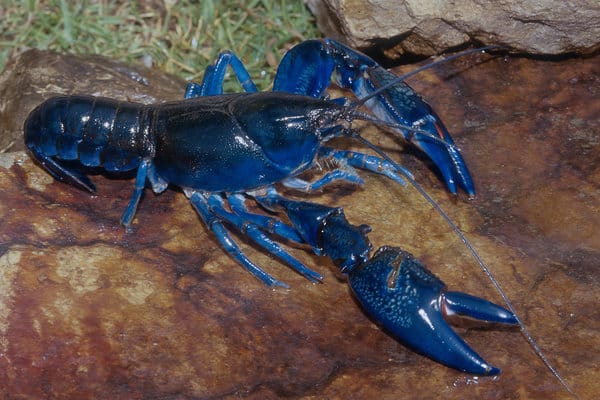
Brown Panda
The Qinling panda is a subspecies of the giant panda with dark brown and light brown fur, instead of the usual black and white. It was first discovered in 1959, and subsequently recognized as a separate subspecies in 2005. Brown pandas are very rare, with no more than 100 estimated to exist in the wild.
The brown coloration is suspected to be a consequence of inbreeding resulting in the preservation of the responsible mutation.

Unusual Zebra Stripe Patterns
This zebra is exhibiting a different pattern rather than its kind’s normal stripes.
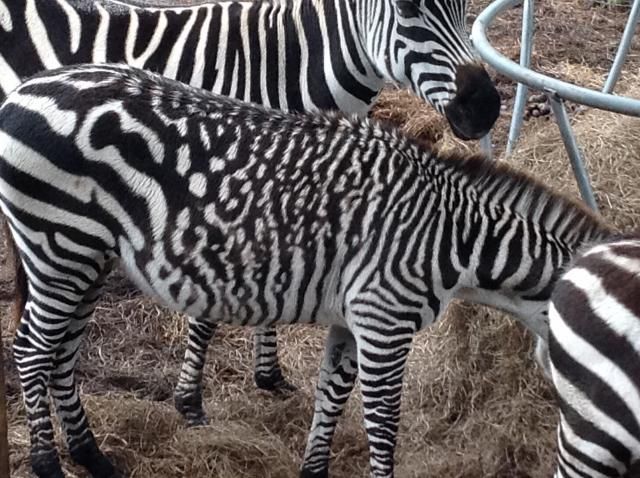
Spotless Cheetah
This spotless cheetah was filmed at the Athi Kapiti Conservancy in Kenya. Its unusual appearance is thought to be the result of a recessive gene which dilutes the spots. It’s an incredibly rare sighting: the last recorded sighting of a spotless cheetah was back in 1921.
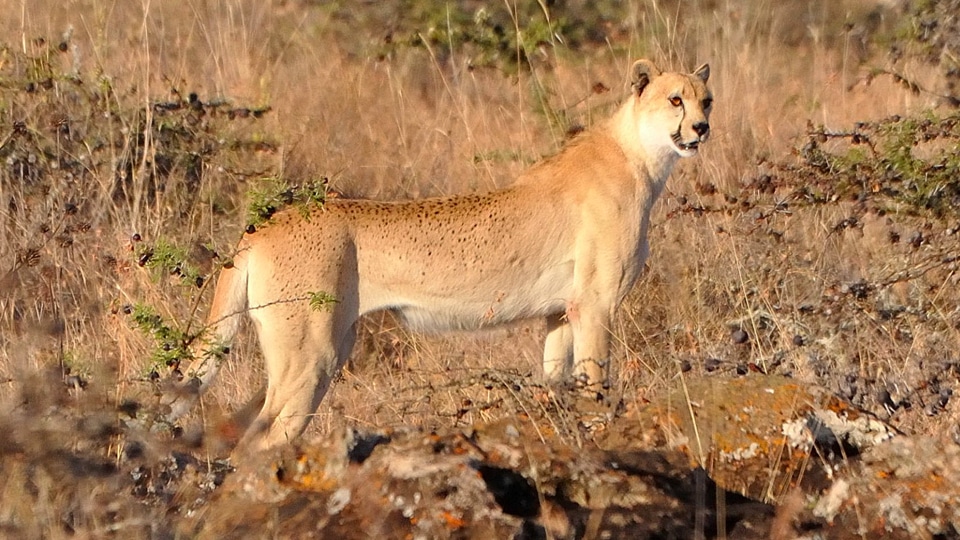
The ‘King Cheetah’ Mutation
First documented in the wild in 1926, the ‘King Cheetah’ was originally thought to be a hybrid cross between a leopard and a cheetah. It has subsequently been reported only five times in the wild since the 1920s (in Zimbabwe, Botswana, and South Africa), and was not photographed until 1974. Only in 2012, the cause of this color variation was identified as a mutation in the gene for transmembrane aminopeptidase (Taqpep), which is the same gene responsible for the striped (“mackerel”) variation in tabby cats (which usually have a “blotchy” pattern).
Since this is caused by a recessive allele, both parents must carriers of the ‘King Cheetah’ recessive gene in order to potentially produce such an offspring.

Tiger Color Variations
Here is a ‘normal’ tiger pictured with three color variants: a golden tiger whose stripes are a darker orange, not black; a white tiger with black stripes; and a stripeless white tiger. All are the results of various color mutations.
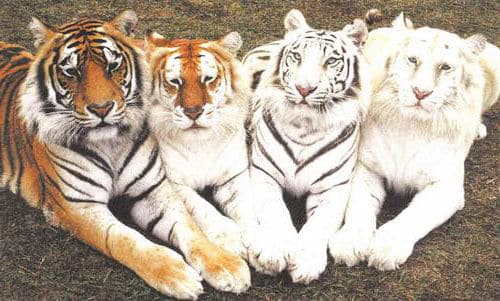
Chimeric Animals
A chimera is an animal with two or more genetically distinct cell populations, resulting in mixed pigmentation patterns. This can occur, for example, when two fertilized eggs fuse together, leading to an animal that displays characteristics of both embryos (an animal which is, essentially, its own twin).
Many chimeric animals even exhibit distinctly different facial coloration on each side of their face, resulting in a very unusual physical appearance.
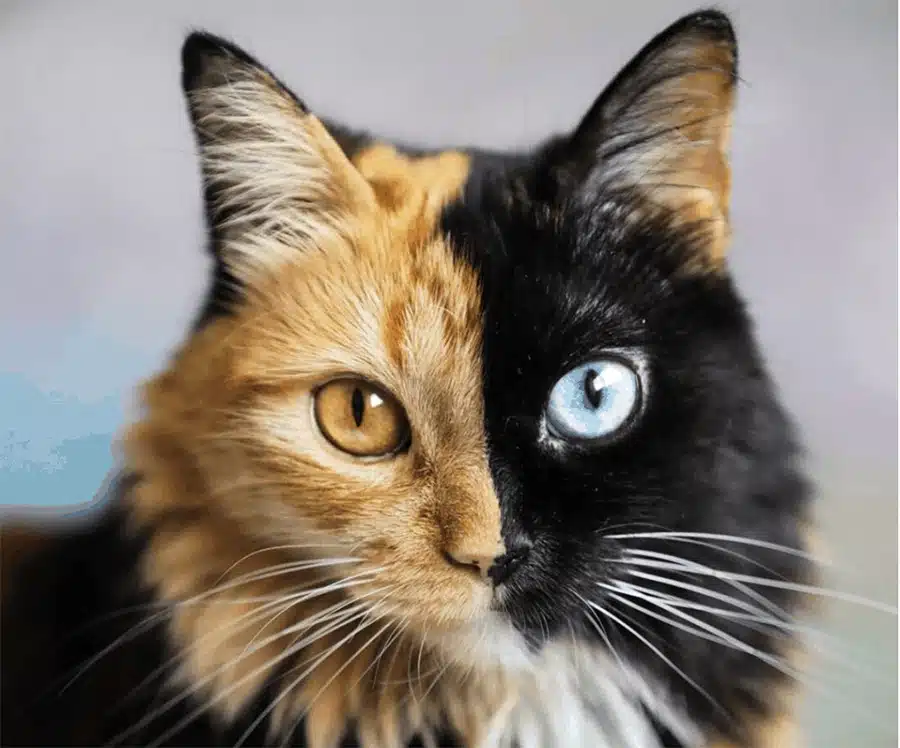
Learn more about animal chimeras here (including many examples, with photos).
Gynandromorphic Animals
A specific type of chimera is the gynandromorphic animal, which possesses the physical traits of both males and females of its kind. These creatures often display a striking contrast of colors, especially in species in which males and females differ greatly in appearance. Bilateral gynandromorphy is an even more specific and rare occurrence, where exactly one half of the body looks like a typical male, and the other half appears female.
Gynandromorphic chimeras can be found in a wide range of animal species, from insects to birds and even mammals.

Vitiligo in Animals
Vitiligo is an autoimmune disorder that affects both humans and animals. It causes the loss of melanocytes, which are responsible for the production of melanin, leading to depigmentation of fur and/or skin patches. The condition affects around 0.5-1% of the human population, and it is also observed in various animal species.
The exact cause of vitiligo is not fully understood, but it is believed to involve a complex interplay of multiple genetic factors and environmental triggers. Researchers have identified over 50 vitiligo susceptibility loci that contribute to the development of the condition in humans. Similarly, certain animal species with genetic predispositions to vitiligo have been observed.
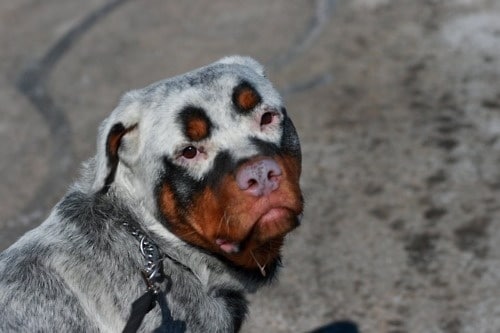
Learn more about vitiligo in animals (including many examples, with photos).
Environmental or Temporary Animal Color Changes
Environmental or temporary animal color changes can occur in various species due to factors such as chemicals, contaminants, or ingestion of certain substances. These color changes might be permanent or temporary, depending on the cause and other circumstances.
Purple Polar Bear
One striking example of such temporary color change occurred in 1999, when a polar bear named Pelusa at the Mendoza Zoological Park in Argentina turned purple due to a chemical reaction with a drug she was administered to treat a skin condition. Her normal white color returned not long after.
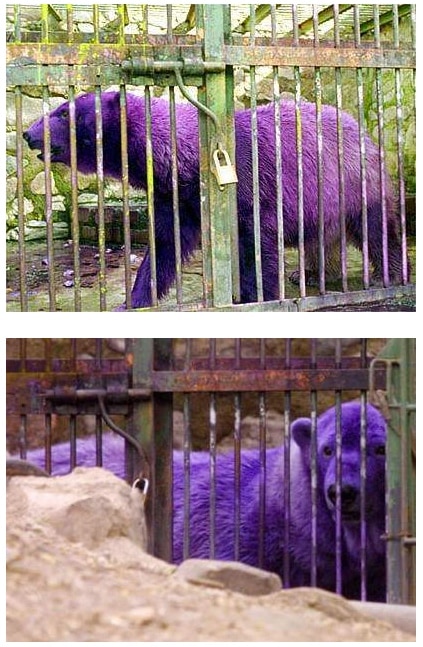
Purple Squirrel
Another such strange color variation was reported in Stubbington, Hampshire (England), where students at the Meoncross School encountered a purple squirrel (which was later nicknamed Pete). While locals initially feared Pete may have fallen (accidentally or otherwise) into some purple paint, experts did not believe this explained its even coloring. The cause of his unique coloration remains unknown.
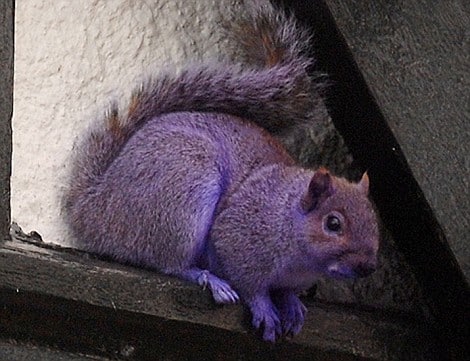
Orange Alligators
Orange alligators that were spotted in different parts of the United States were initially believed to be erythristic. However, this unusual coloration is now believed to be caused by iron oxide, a rusty residue from pipes or other iron-filled environments.

Animal Fur and Feather Variations
Hairless, Featherless, and Scaleless Animals
Some animals species or subspecies naturally lack hair, feathers, or scales. Examples include the hairless Sphynx cat breed and naked mole-rats. In some cases, these “bald” animals are the result of genetic mutations, while in other cases, they’re natural traits that have evolved over time.
Rarely, however, animals that should be covered in fur, feathers, or scales – are not. Usually, this is a result of either a genetic mutation or a medical condition.
Regardless, it can be quite startling to see bald animals without their distinctive fur or feathers.
Learn more about unusually hairless mammals and featherless birds (including many examples, with photos).
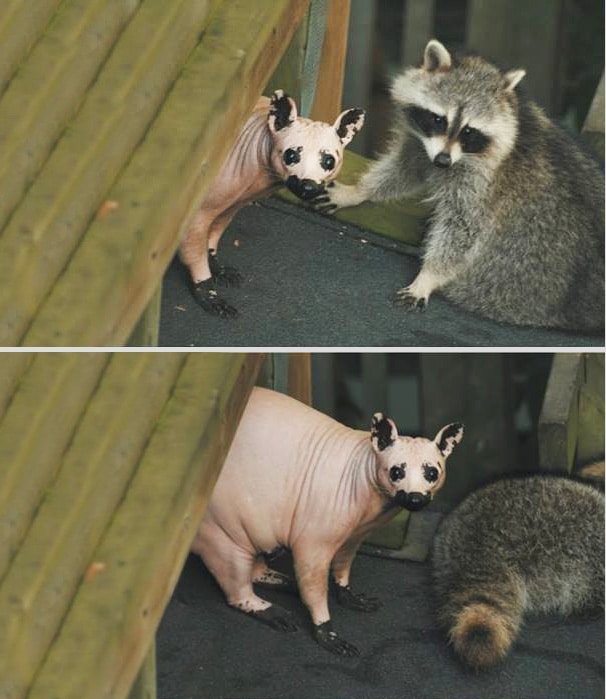
And if you’re feeling extra curious (and brave), you might want to check out what different owl species look like without their feathers, and what hairless bears look like.
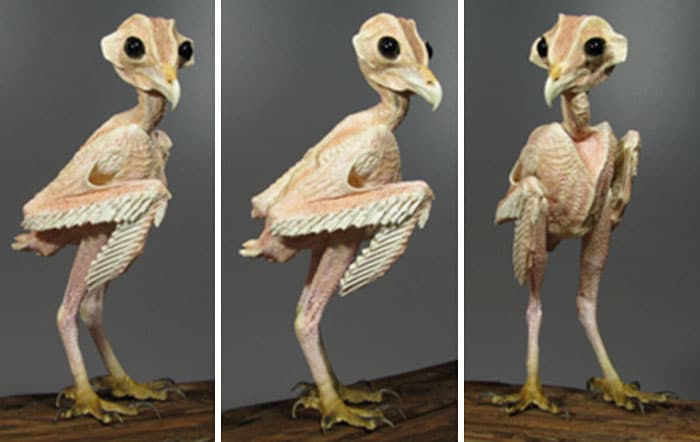
Animal Fur Length Variations and Mutations
Different species and breeds of animals exhibit significant variation in hair length. For instance, the long-haired Maine Coon cat and short-haired Siamese cat exhibit stark contrasts in hair length. Hair length can be influenced by factors such as genetics, climate, and selective breeding.
Rarely, genetic anomalies can cause a normally long-haired animal to grow much shorter hair than the rest of its species. The opposite can also occur, with recessive genes leading to abnormally long hair in otherwise short-haired animals. A rare example of this is the Long-Coated Dalmatian, seen below.

Animals With Unusually Curly Hair
Some animals exhibit curly or wavy hair due to mutations or selective breeding. Examples include the curly-haired Selkirk Rex cat, and curly-coated retriever dog. These hair variations often provide unique textures and patterns, making the animals distinct from their straight-haired counterparts.
Lesser-known examples of curly haired genetic anomalies include curly haired horses, Guinea pigs, rats, and even pigs. It can also affect birds, leading to curly-feathered pigeons and geese,
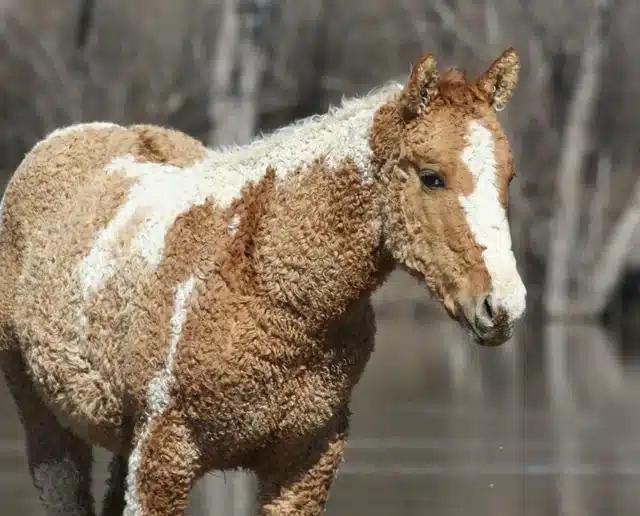
Hybrid Animals That Look Very Different From Their Parent Species
Hybrid animals are distinct creature that are the result of interbreeding of two different species. These are fascinating creatures that display a distinctive mix of traits inherited from each parent species, often resulting a striking and unusual appearance.
For example, the grolar bear is a hybrid animal which is a mix between a grizzly bear and a polar bear. Grolar bears exhibit traits from both species, such as a grizzly bear’s brown coat blended with a polar bear’s white fur. They also have a humped back, a trait characteristic of a grizzly.
Other fascinating examples of unique hybrid animals include:
- Wholphin: A rare hybrid animal that results from the mating of a dolphin and a false killer whale.
- Leopon: A Leopard / Lion hybrid that has the signature spotting of the leopard, with the mane and tufted tail of a lion.
- Narluga: A Narwhal / Beluga Whale hybrid which occurs naturally in the wild.
- Coywolf: Coyote / Wolf hybrids became so common in the United States, they were eventually recognized as their own subspecies.
- Yaez: A cross between domesticated goats and Nubian Ibex, which are wild goats known for their massive curving horns.
- African Elephant / Asian Elephant Hybrid: only a single one had ever been born.
To learn more about these unusual hybrids and many others, check out the Complete Online Guide to Hybrid Animals (including many examples, with photos).
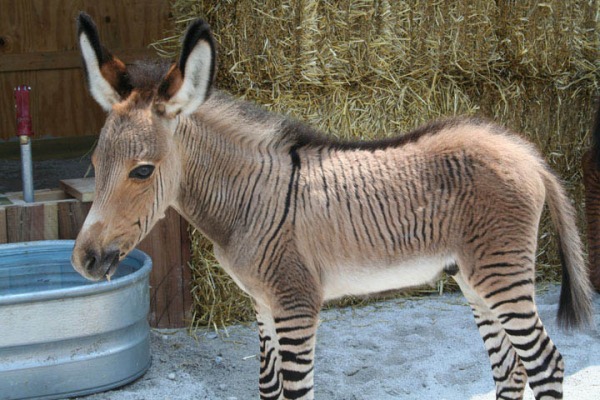
Extinct Animal Sub-Species Color Variations
Some interesting color variations can now unfortunately only be found in extinct sub-species that looked very different than their relatives that still exist today.
One fascinating example is the quagga (seen below), a sub-species of the plains zebra, which had a unique stripe pattern. The quagga only had stripes up to its shoulders, while their legs and hindquarters were solid brown.
Color mutations affect not just appearance, but also the survival and adaptation of species. For instance, species with unique colors or patterns may have had better chances at evading predators or attracting mates.
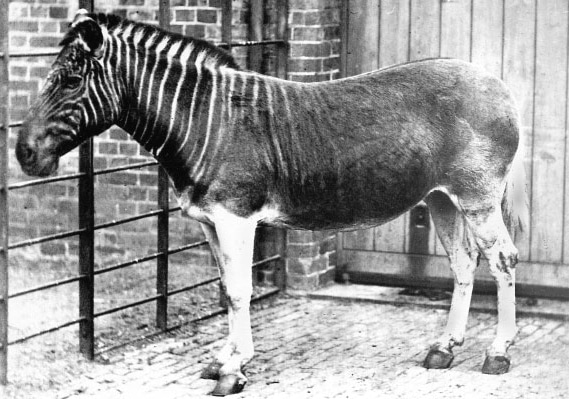
Animal Color Variations That Unfortunately Do Not Exist
In the animal kingdom, we can observe countless fascinating color variations, but some, unfortunately, only exist in the realms of fiction or photo manipulation.
One such mythical creatures is the black lion.
Are Black Lions Real?
While there are numerous instances of melanistic animals, which display an excess of dark pigmentation due to genetic mutations, the black lion is not one of them. Melanism has been observed in various species like jaguars, deer, and squirrels (it is in fact unusually common in big cats). However, despite the popularity of doctored images of black lions circulated on the internet, there has been no record of such an occurrence in the wild or in captivity.
While there are many fascinating color variations, there are also times where people may stretch facts or use image manipulation software to promote myths about nonexistent color variants.


